/cdn.vox-cdn.com/uploads/chorus_image/image/52180705/FFXVintro.0.jpeg)
It's been a long time coming, but Final Fantasy 15 is here. As always with the franchise, this massive time sink of a game requires a lot out of its audience to really tap into its true potential, so here's a breakdown of all of the major systems and some tips to help you wrap your mind around Final Fantasy 15.
Table of contents
Play it like an action game

Although you can employ a traditional wait battle system that's more akin to the classic Final Fantasy series (which pauses combat periodically to allow players to catch up), the default option is to play it like a fully fledged action game. Since you're only controlling the main character, Noctis, it isn't too difficult to micromanage, but here are some pointers to get you started.
Always move around while you're fighting. You have access to a dodge button (square on PlayStation 4 and X on Xbox One, which you can hold to automatically avoid attacks at the cost of XP or pressed with a directional input to roll), but you can also manually avoid attacks by moving out of the way with the left analog stick.
Since positioning actually matters, one way to thin the herd is to isolate enemies that are off on their own and take them out one by one. Noctis has a few tricks up his sleeve to achieve this, most notably his Warp Strike power. By pressing triangle (Y), you can teleport forward. If you're locking onto a location or enemy with R1 (right bumper), you can teleport to a specific target. If you see a lone enemy, simply look at them, press the lock-on button and Warp Strike.
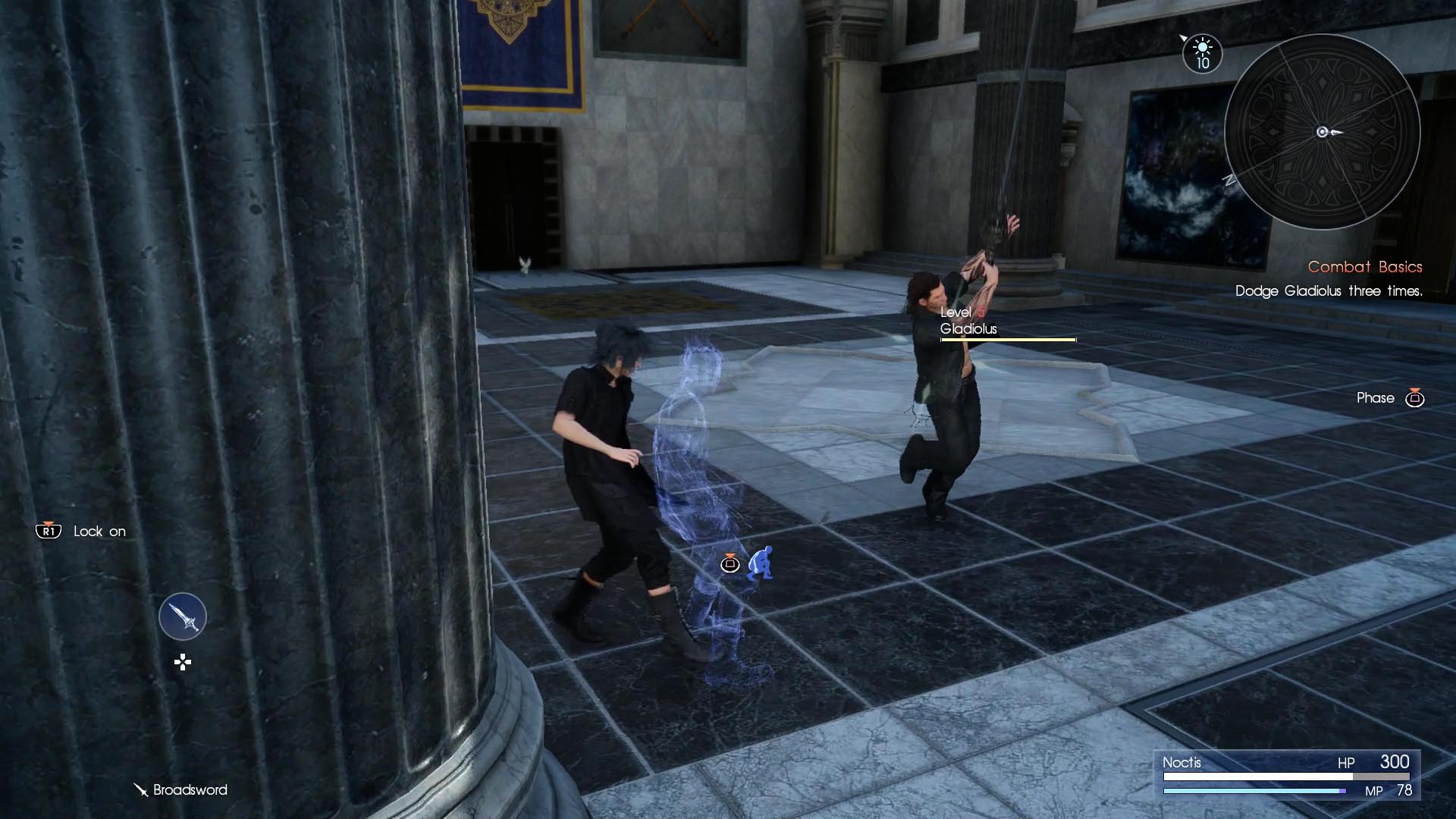
Alternatively, you can use warping as a defensive tool. Before you approach any given fight out in the open world, scout out a potential Warp Strike location. They're usually designated by structures like towers, or high-up areas like mountain ledges. If there's a Warp Strike icon that pops up (a blue circle with a button prompt), that's a special target that you can teleport to and recover HP and MP momentarily from. You can also opt to hold the dodge button while you're near cover as another means of recovering your stats.
The main flow of combat involves basic attacks, dodging, and the occasional skill/spell use. For the former two abilities you can hold the button down, so there's no need to frantically mash, and when dodging, it's important to keep the camera focused in on the action at hand. That way you can always see what's coming for you, like a projectile or charge for example and know when to hold down the dodge button.
Leveling up will allow you to purchase more skills with AP (ability points, more on that later), but you'll begin the game with three — Mark, Tempest and Piercer. When starting off, favor the Tempest skill for group targets and Piercer for single targets.
Now you're squared away for basic combat situations, but there's a lot of preparations you can make outside of combat to help prepare you for some of the tougher battles.
Sell your treasure and buy ingredients
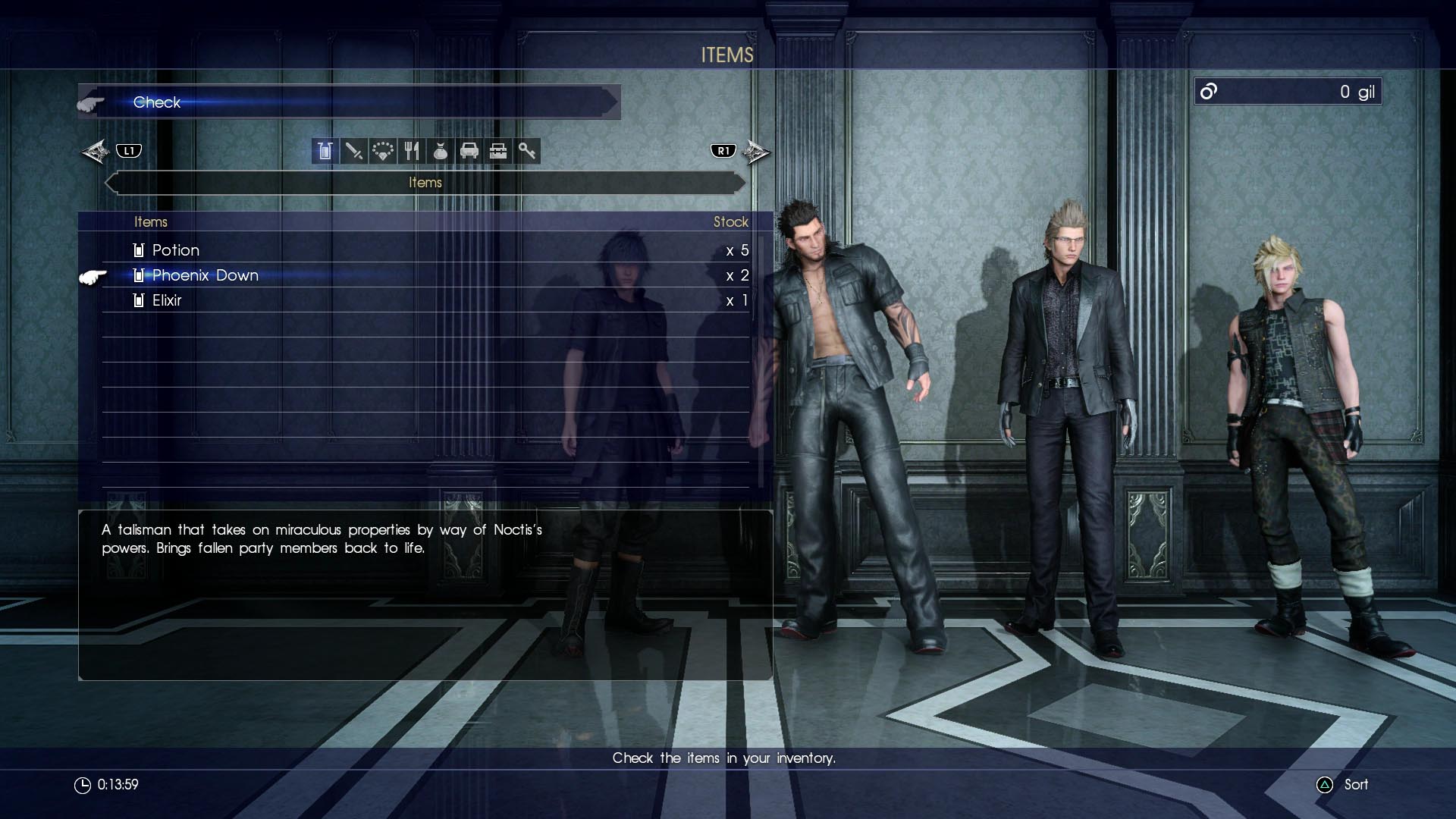
One massive thing Final Fantasy 15 doesn't really remind you of is that you need to offload your inventory as often as possible. Stored under a special tab called "Treasures," these items can be sold at any vendor for straight cash (called "Gil"), for mostly high prices. If you're low on cash, the easiest way to earn more is to fight enemies. It doesn't really matter if they're rare or common. Any enemy has a chance of dropping treasure (usually in the form of an animal part) that you can then sell.
Remember that you can access a basic version of a marketplace from directly inside of your car at any time. It might not have the best stock, but you can easily sell your treasures anywhere on the map.
So what do you do with all your surplus Gil? Buy at least 30 potions at the start. Even when Noctis reaches zero HP, you can use an item to bring him back from the brink and recover immediately. While regular potions won't provide the biggest HP boost, they're still viable options for avoiding a game over screen.
After that's taken care of, one of the most important item types you can buy from shops are ingredients. These are used as reagents to provide party member Ignis with more cooking recipes, which can be called upon after interacting with any campsite on the map. When prompted, you can choose between several food items that provide unique buffs for periods of time. By having access to multiple ingredients, Ignis will discover and cook newer, more powerful recipes. Additionally, Ignis can learn new types of food from quests, as well as the mere act of killing a new type of beast and acquiring a new ingredient.
Speaking of crafting, magic has been completely reworked in Final Fantasy 15.
Always be crafting magic (Elemancy)
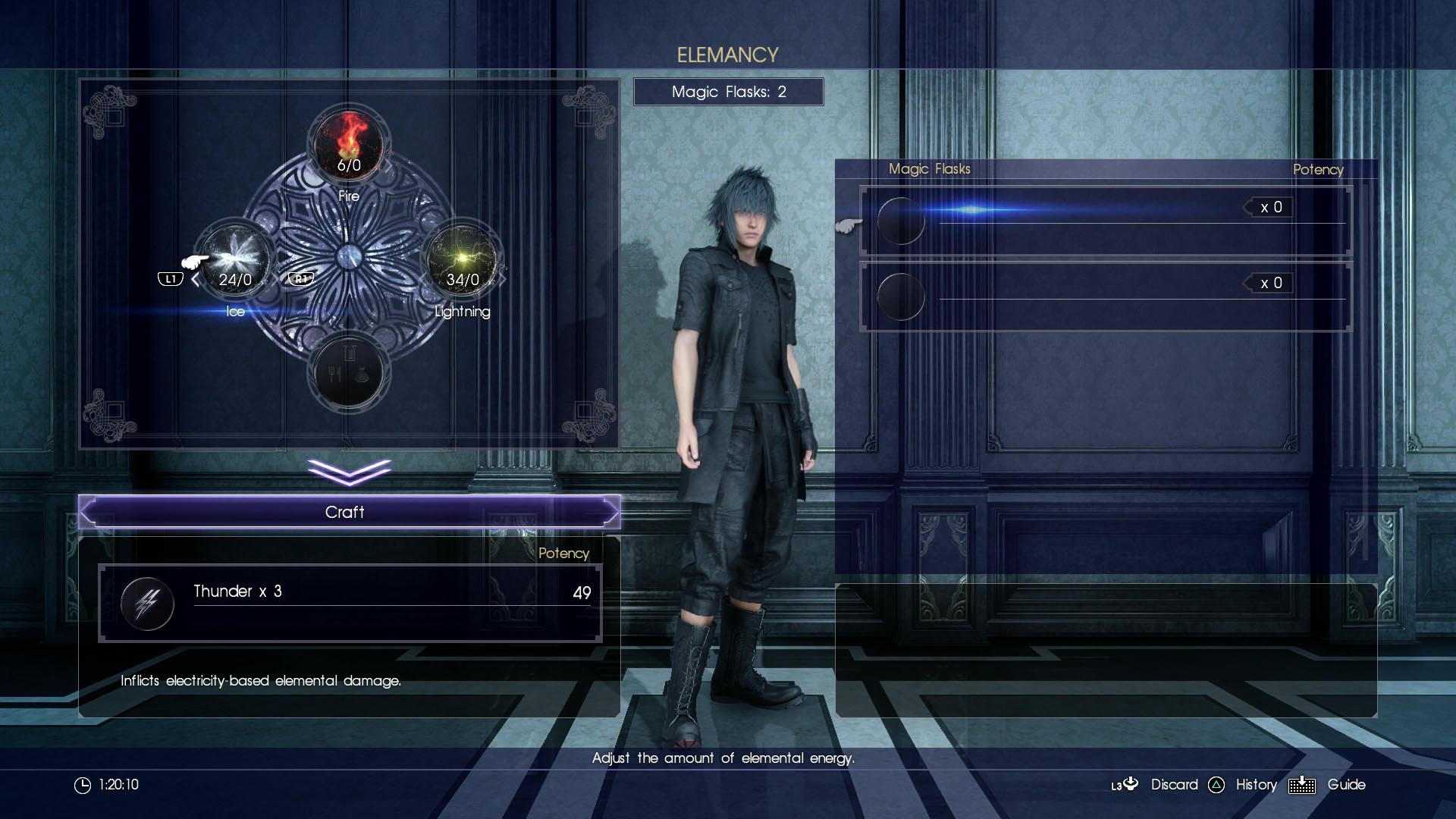
Magic is complicated in Final Fantasy 15. It takes a page from Final Fantasy 8's draw system, where magic is merely a resource that needs to be crafted.
Magic is broken up into three elements — fire, ice and lightning — up to a value of 99. You'll gain resources in dungeons and on the world map through everyday objects like oil drums for fire or through elemental resource nodes. You only need one magic resource and one flask (you start with three and unlock more by playing through the story) to craft a spell, but you can modify them with items. Before we get into that level of granular detail however, let's start simple.
If you queue up one fire resource, you'll create a fire spell with a potency (power) of one, that can be used three times. If you funnel 99 fire resources, you'll get a 99 potency spell that can also be used three times. However, since you're allowed to add one item in the mix, you can also modify its parameters to provide a heal (if you use a recovery item like a potion), or buff the spell with more charges (a muscle stimulant will up the charges to five).
The basic principle of Elemancy is to always be creating and using spells. You have the option to equip them on CPU-controlled party members, but having at least one spell at all times tied to Noctis ensures that you have total control over the fate of one flask. You're going to want to follow this loop for spells throughout the entire game — create a mid-range spell (of around 30 potency), keep it on Noctis, and use it whenever possible. If there's a boss encounter, Final Fantasy 15 will usually warn you (or it will be plainly obvious), and you should create a spell of 50 or above resources instead.
Either way, you're going to be coming across a ton of resources throughout the game, and you don't want to have a full stock of 99 when you do. Get in the habit of making one of each element so you always have room for nodes, and if necessary, you can even craft a spell on the spot and pick up a new node to fill your pool back up to 99.
Leveling up (Ascension)
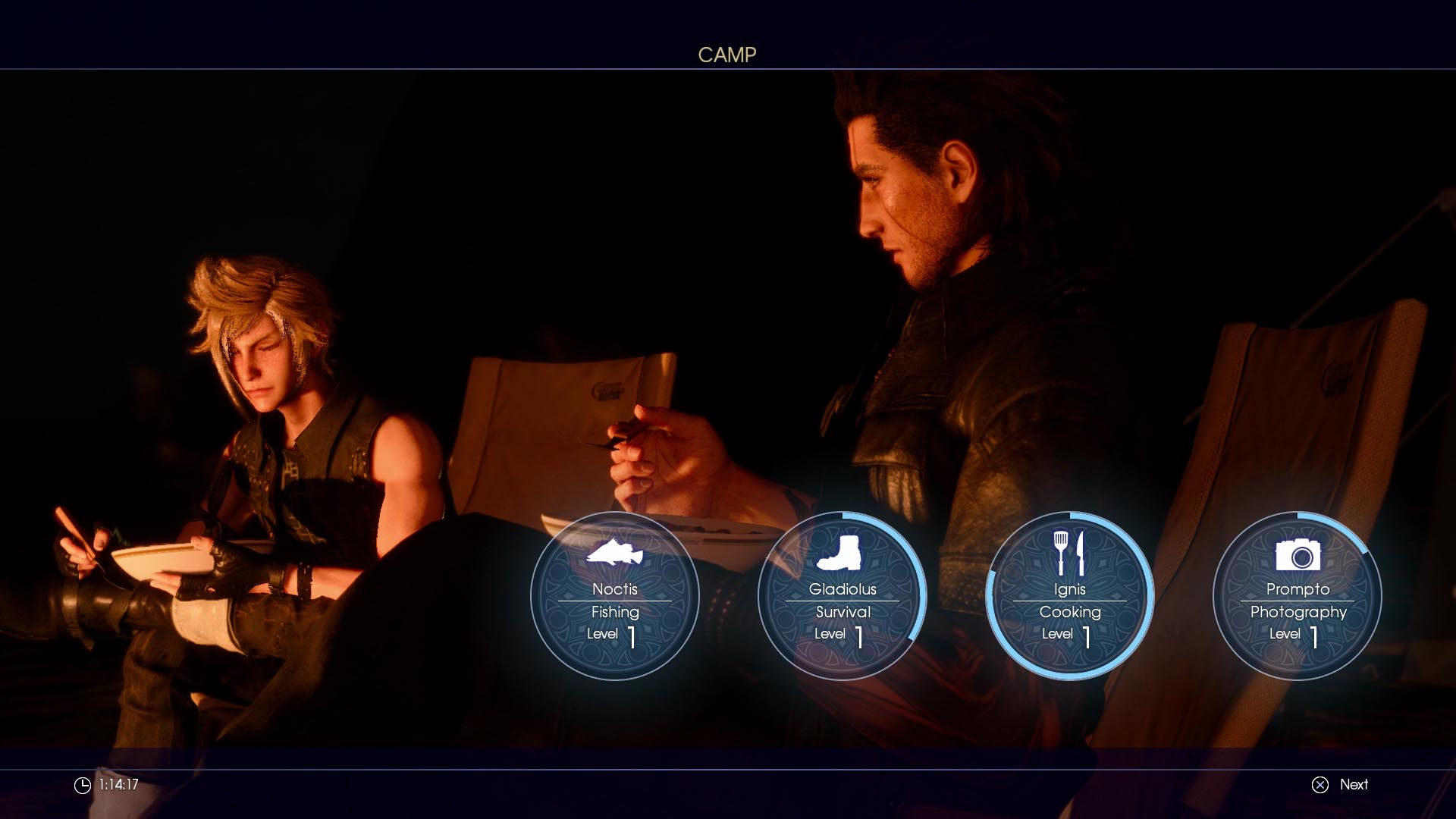
Leveling up works differently in Final Fantasy 15. Instead of getting experience that can be applied immediately, you need to rest at a campsite, inn or specified story location to apply that experience and level up.
Nexuses
Leveling influences your base stats and hitpoints, while AP (Ability Points) impacts your skills. Each skill costs a certain amount of AP to either unlock or level up, and are purchased by way of multiple skill trees, called Nexuses.
Combat
The Combat Nexus entirely deals with Noctis himself, so it's ideal for players who don't like to rely on AI allies to get the job done. Here you'll find abilities like reduced MP costs, air dashing, air dodging and Warp Strike bonuses.
Try to get a feel for what you're gravitating toward naturally in the first few hours (make a mental note if you dodge, Warp Strike or use basic attacks more often than other tactics), and build toward that direction of the Nexus tree first.
Teamwork
The core role of the Teamwork Nexus is to provide behind-the-scenes upgrades for your party members so they can better serve you in battle. These are advantages like extra damage for your AI-controlled party, automatic counterattacks that put enemies into a stunned state and boosting the chance to get a first-strike bonus at the start of a fight.
Again, this Nexus heavily relies on the AI performing the right actions, so it's not nearly as reliable as other trees and something you should consider at a later point in the game. That's mostly because Noctis is your strongest character right out of the gate, so buffing all of your other, weaker teammates won't really serve you all that well early on. Once you've capped out Noctis' capabilities, you'll need the rest of your team to follow suit to take on some of the tougher roadblocks.
There is one exception in the Teamwork Nexus, and one you should get immediately at just six AP — Analyze. This sleeper ability lets Ignis automatically scan for weaknesses at the start of an encounter and is not a technique that requires expending your ability meter. This meter is a tiny gauge that fills up while performing actions in battle, and it allows the AI to perform special moves (like the aforementioned Mark, Tempest and Piercer).
Stats
This Nexus is pretty straightforward, as it only branches off into two categories: health bonuses and more accessory slots for Noctis and his team. We recommend building into this category directly after acquiring Analyze from the Teamwork Nexus, unlocking the 10 AP cost Health Level node upward first, then spending 16 AP each for all four party members to gain that second accessory slot.
You can purchase accessories in the first hour at shops on the critical story path, and they provide massive bonuses that far exceed the low amount of AP you're spending to allow two slots. Comparatively, you might spend twice that in AP to get the same bonus from another Nexus.
Exploration
This is a strange Nexus that's built to give you more AP — with the catch that those bonuses, in turn, cost AP. You can spring for bigger AP payouts when camping, riding in the car, riding on chocobos (or winning Chocobo races, which unlock midway through the game), catching fish or taking photos.
Investing in this Nexus is a gamble unless you know exactly how much time you spend doing any one of these activities, so try to revisit it after the first several hours to decide where you might earn the best returns. In our opinion, it's ideal to go after the car bonus first as you're required to ride in the Regalia as part of the story.
Magic
The Magic Nexus isn't something that you need to focus on until later in the game, once you've gotten a handle on how Elemancy works. You can gain bonuses like a greater resource return on nodes or automatic potency bonuses, but these skills are always going to be limited by how many flasks you have at your disposal and your item collection.
Once you've amassed a hefty sum of Gil and can nitpick every facet of Elemancy, consider digging into this tree.

Recovery
As a sort of alternate Combat Nexus, this tree is one of the most helpful and mostly centers on the actions of Noctis with a few exceptions. You can build into greater HP regeneration when behind cover, a larger stamina level (which governs sprinting both in and out of combat) and additional healing abilities for you teammates.
After focusing on the Stats Nexus, unlock the basic nodes of Recovery that branch out directly from the center right. The upgrades are fairly cheap, even when digging into the later sections of the tree.
Staying alive is important, because nearly every fight provides easy access to cover or a Warp Strike point where you can recover completely as Noctis, while saving all of your precious healing items for your crew.
Techniques
This Nexus governs all of your teammates' techniques, which you can think of as Limit Breaks (powerful abilities) kicked off by your team. In combat, you'll build up a technique meter, which is broken up into sections.
Later techniques will require multiple sections of the meter, but initial techniques will only need one. You can use them frequently to deal with larger groups of enemies or more imposing foes, but you'll want to expend all the techniques you can in boss fights so you can earn more meter.
As one of the most expensive Nexus trees, you're probably going to gravitate toward other cheaper choices, but keep in mind that you will want to eventually build into Techniques later in the game. The last, most expensive nodes for each character (999 AP) are the Limit Break skills, which unlock further damage potential for techniques for each character.
Because of this, we recommended that you start looking at this Nexus after your average AP upgrade is around 100 in cost. That's roughly around when the Technique Nexus becomes more relevant, and you've exhausted all of your basic upgrades elsewhere.
Don't skimp out on sidequests
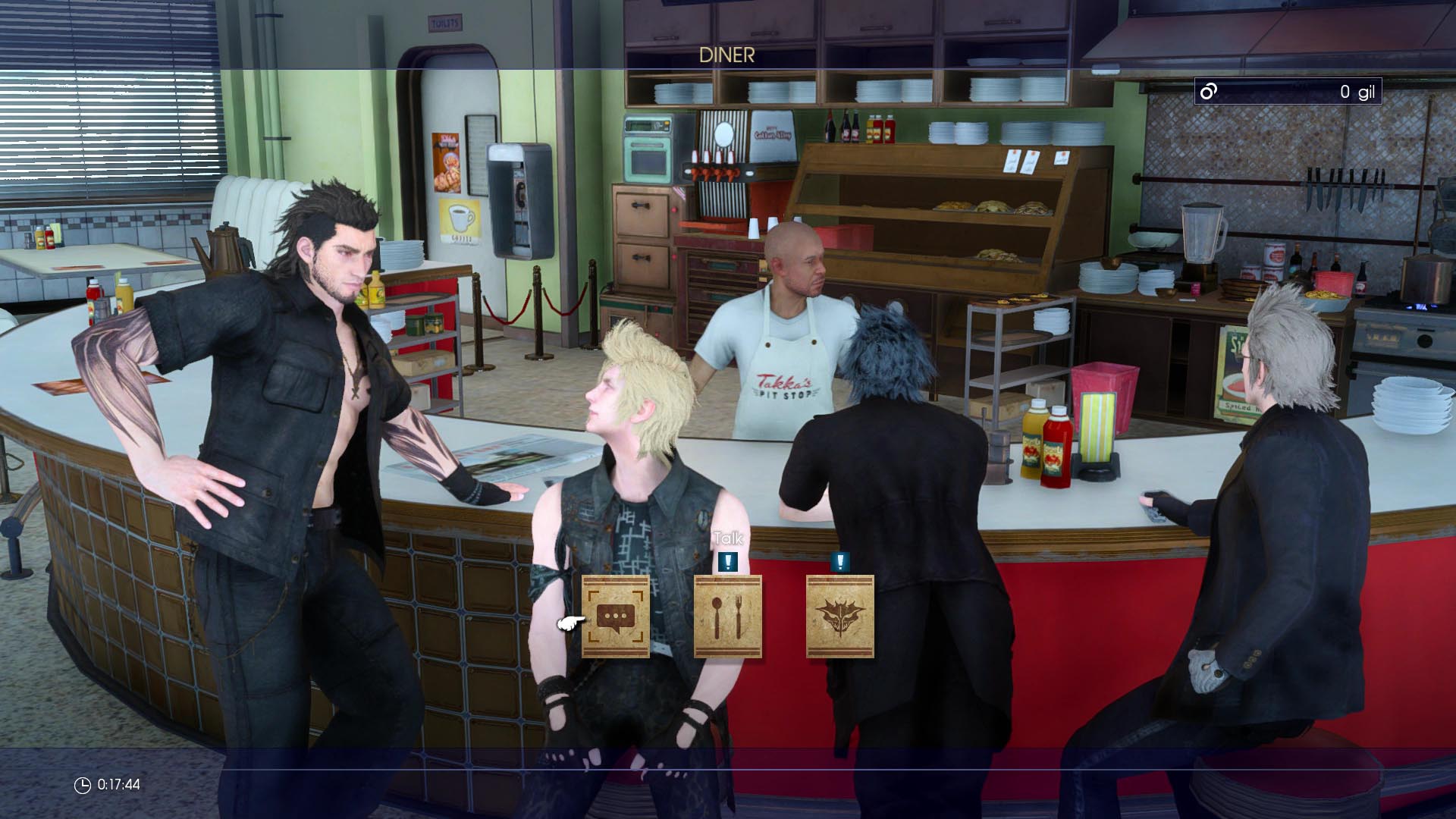
Talk to everyone you see in Final Fantasy 15 that has a minimap icon associated with them. Going into diners will earn you the most important rewards of all — precious markers on the world map. Although you can discover a lot on your own, being able to see treasure locations, campsites and mineral deposits will cut down on your busywork considerably and aid you in your quest to earn more AP between story missions.
You'll earn AP and experience for many of these tasks, so while you aren't technically required to do sidequests, we recommend embarking on at least two or three of them each chapter to stay ahead of the curve required by the campaign. You can get by if you just complete story missions, but you might have a tough time with boss encounters if you aren't accruing a steady pace of AP and putting that AP back into Nexuses and developing your character.
Explore, but save time doing it
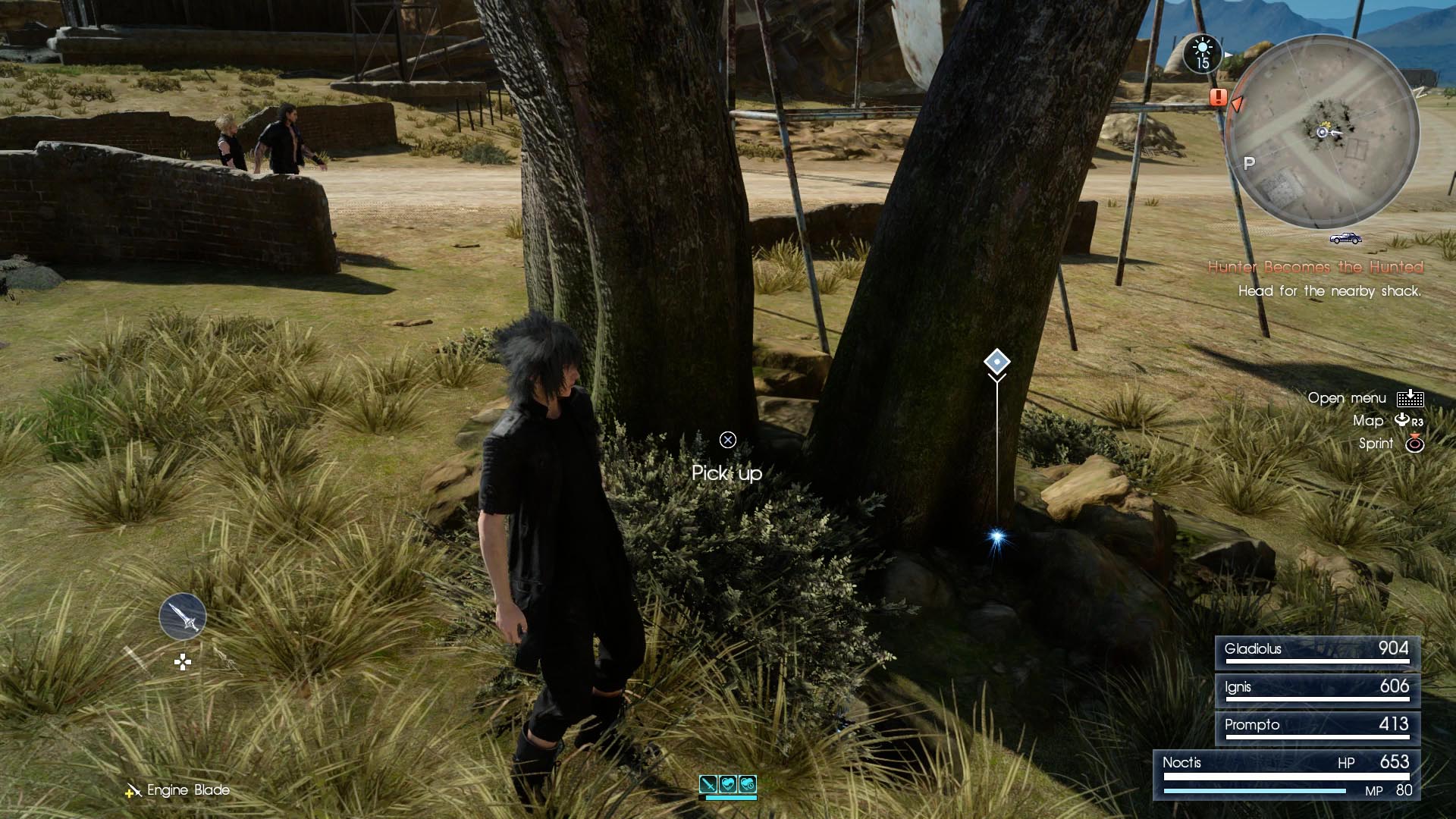
Final Fantasy 15 uses several fast travel mechanics that help you get to where you need to go, and all roads lead back to your car, the Regalia.
You can opt to instantly teleport back to your car while exploring the world map, so it's a good idea to leave the Regalia near a required story mission location, and then go spelunking in the open world wherever you feel like it. That way, if you need to get back and get on with the narrative, you can save time warp directly to your car and avoid backtracking.
Additionally, you can also fast travel to the spot where you last rested or fast travel to parking spots, which you discover on the open road.
Remember to rest
Whenever possible, stay rested up at bigger towns like Lestallum, which have have access to a variety of different items and gear.
You can warp between towns and the car (which you have stored wherever you want) at will. Plus, you can constantly reap the benefits of having food buffs up all of the time if you're resting strategically, which is an essential strategy for always being ready for what the game throws at you. If you don't rest frequently, your characters are going operate at the lowest possible baseline. But by taking just a few moments to set up camp, Ignis will cook stat buffing food for your party regularly and keep you above that baseline. This will come in handy when you come across unpredictable boss fights.
Create your own fast travel network
By spreading out your car and rested spawn points like inns and campsites, you can game the system to your advantage to create multiple custom hubs. That way, if you need to get to a specific area of the map for a quest, you can do so without having to manually walk everywhere. With several hubs, you're creating your own custom fast travel network.